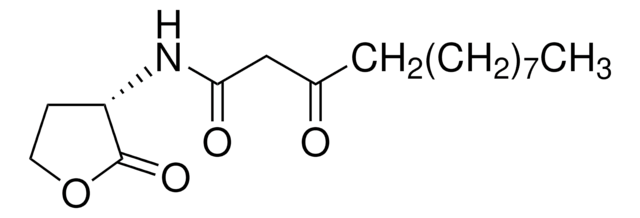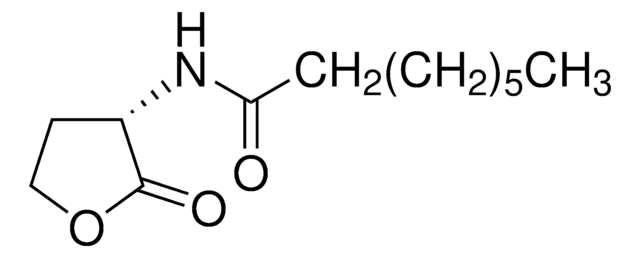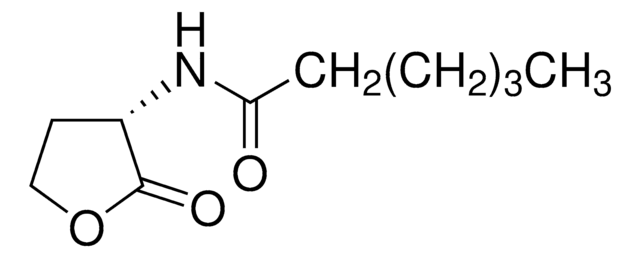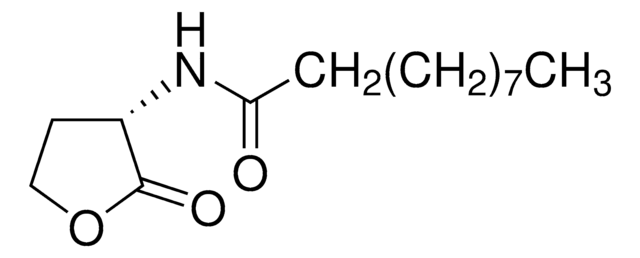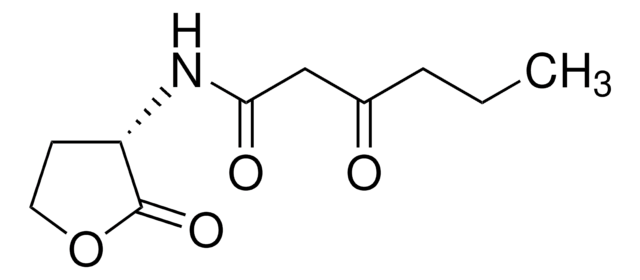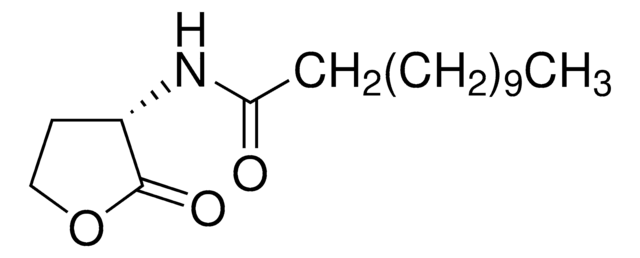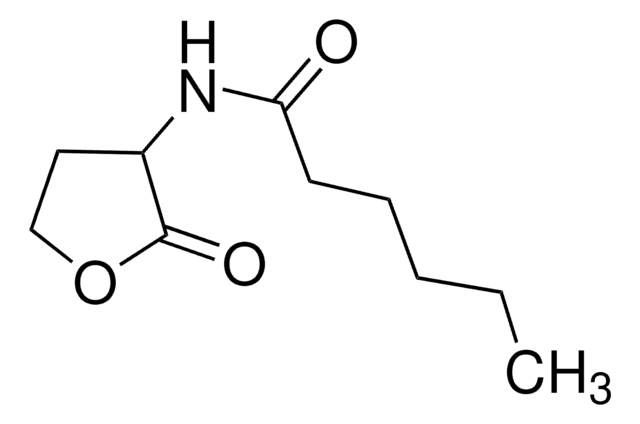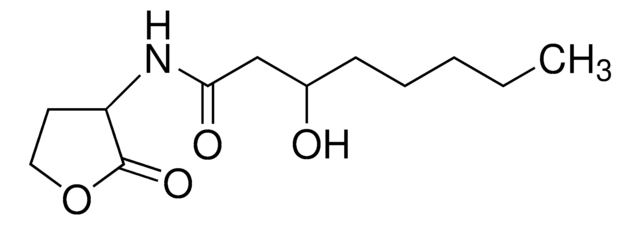O1764
N-(3-Oxooctanoyl)-L-homoserine lactone
≥97% (HPLC), white, powder
Synonym(s):
3-oxo-C8-HSL, 3OC8-HSL, N-(β-Ketooctanoyl)-L-homoserine
About This Item
Recommended Products
Quality Level
Assay
≥97% (HPLC)
form
powder
mol wt
241.28
technique(s)
protein expression: suitable
color
white
solubility
chloroform: 50 mg/mL, clear, colorless
shipped in
wet ice
storage temp.
−20°C
SMILES string
CCCCCC(=O)CC(=O)N[C@H]1CCOC1=O
InChI
1S/C12H19NO4/c1-2-3-4-5-9(14)8-11(15)13-10-6-7-17-12(10)16/h10H,2-8H2,1H3,(H,13,15)/t10-/m0/s1
InChI key
FXCMGCFNLNFLSH-JTQLQIEISA-N
General description
It is a signaling molecule that is produced by Gram negative bacteria.
Application
- to study the effects of pH, temperature, and salinity on extracellular polymeric substances (EPS) of Pseudomonas aeruginosa biofilm.
- as an AHL inducer to activate the quorum sensing pathways in Synechococcus elongatus.
Biochem/physiol Actions
also commonly purchased with this product
Storage Class Code
11 - Combustible Solids
WGK
WGK 3
Flash Point(F)
Not applicable
Flash Point(C)
Not applicable
Personal Protective Equipment
Regulatory Listings
Regulatory Listings are mainly provided for chemical products. Only limited information can be provided here for non-chemical products. No entry means none of the components are listed. It is the user’s obligation to ensure the safe and legal use of the product.
JAN Code
O1764-VAR:
O1764-10MG:
O1764-BULK:
O1764-100MG:
Certificates of Analysis (COA)
Search for Certificates of Analysis (COA) by entering the products Lot/Batch Number. Lot and Batch Numbers can be found on a product’s label following the words ‘Lot’ or ‘Batch’.
Already Own This Product?
Find documentation for the products that you have recently purchased in the Document Library.
Customers Also Viewed
Substances of Pseudomonasaeruginosa Biofilm with
N-(3-Oxooxtanoyl)-L-Homoserine Lactone Addition
Our team of scientists has experience in all areas of research including Life Science, Material Science, Chemical Synthesis, Chromatography, Analytical and many others.
Contact Technical Service